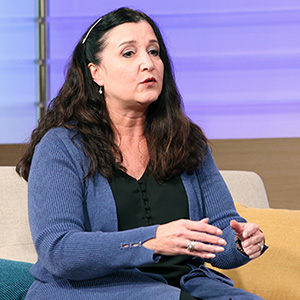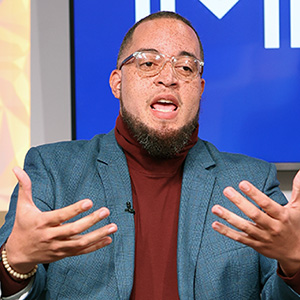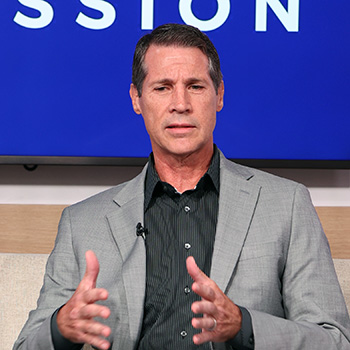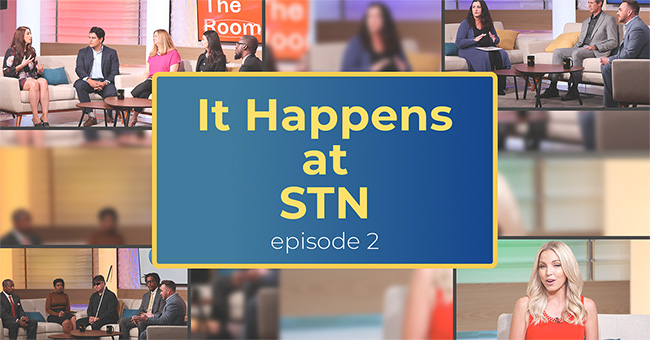The best way to keep people and families out of emergency homeless shelters is to aggressively assist them before they reach the point where emergency shelter is the only option.
During the October episode of It Happens at STN, leadership from UMOM and the Human Services Campus joined and action panel to explain what happens when systemic homelessness is addressed with prevention and diversion and what real results look like?
Action Panelists

- Amy Schwabenlender
- Executive Director
- Human Services Campus

- Richard Crews
- Director of Programs
- Human Services Campus

- Jackson Fonder
- CEO
- UMOM
This Month's Panel
Amy Schwabenlender
Executive Director
Human Services Campus
Richard Crews
Director of Programs
Human Services Campus
Jackson Fonder
CEO
UMOM
prevention [ pri-ven-shuhn ]
diversion [ dih-vur-zhuhn ]
We talk a lot here at STN about systemic homelessness and the strain on the systems intended to help those in the need of assistance. Can you explain these ideas of diversion and prevention and why they are so important when it comes to addressing the homelessness issue?

"Diversion is basically an intervention strategy that shelters use to help families and individuals look at alternate housing options. There are about 220 families waiting for about 11 and a half weeks long to gain entry into an emergency shelter. The longer the waitlist, the higher the priority for diversion itself."
Jackson Fonder
"If somebody is coming into the [Human Services] Campus, naturally it's not someplace that I want somebody to have to stay. Whether it's calling Uncle Larry or Cousin Jamal from New York. If I can get in touch with Cousin Jamal, we are gonna have that conversation, and I'll get you there. We'll buy a bus ticket or whatever is necessary to literally have that person go from the campus to wherever safety is for them."
Richard Crews
"We've created these boxes around how we operate. When we can strip away at those barriers that are holding someone back from taking that step to live on their own independently, let's just remove the barrier. Too often, we make it complicated and difficult for people."
Amy Schwabenlender
Now that we’ve got a better understanding of what diversion and prevention are, what do you see as the goals and benefits of that kind of approach to addressing the issues that factor into systemic homelessness?

"A lot of money is saved. But more importantly, sanity gets saved in that situation because you don't have to exist in a space of being chronically homeless. The fact that we were able to unite you with your family or with your friends. Another piece of that is flexible funding. We're working on our own program to give our employees the Green Light so that they really understand what it is that this person needs right now that would end their homelessness right now."
Richard Crews
"Government funding, in this case, flexible funding, comes from Maricopa County, because they saw what the team did with that ‘Green Light’ initiative Richard mentioned and said, “Well, that makes sense. You all do know what you're doing. Here's some flexible funding."
Amy Schwabenlender
"Sometimes folks who are experiencing homelessness might think that shelter is the only option. They call the Family Housing Hub or they call another hub and they learn that that's not the only option. So visualize a call center of UMOM employees talking with somebody who's about to experience homelessness. And what happens is we're looking for a variety of options so that they're not forced into the emergency shelter, which has trauma in itself. If we can avoid that, it's a win-win all the way around."
Jackson Fonder
We’re pushing for repeatable solutions to these issues. What are some real-world examples of solutions, and what does continued success look like?

"What we learned with this ‘Green Light’ initiative is that we’d get requests from staff who have a client living out of their car, but it's not registered and they need a deposit for their car insurance or something. We got to the point where we said if you find something a client needs, and it will move them out of homelessness quickly today, tomorrow, this week, and it's less than $500, just assume you have the approval to do it."
Amy schwabenlender
"Sometimes a diversion conversation might be something simple like they need a little financial assistance. Sometimes it is lengthy. Right now, we're between 15 and 20% diversion. For every person we can divert it frees up a bed for a family who might otherwise have to sleep on the street that night. But the real goal is 30%. That's pretty lofty. That's pretty aggressive. But, we think we can get there."
Jackson Fonder
"In the last fiscal year, over a thousand people either came through the diversion piece or that flexible funding piece and we want to make sure that we're ending homelessness in that space. Let's say that you need move-in assistance or you're about to be evicted or you need your car fixed, whatever it is to make sure that you don't fall back into homelessness. We can give you that piece that gets you out. We've found that we have an over 80% success rate if we can make that connection where you don't end up back in homelessness. So these are the types of solutions that work when we take the handcuffs off of organizations and say, “Let's go do this work, let's go end homelessness.” And we're seeing those returns in the fact that people aren't returning."
Richard Crews



